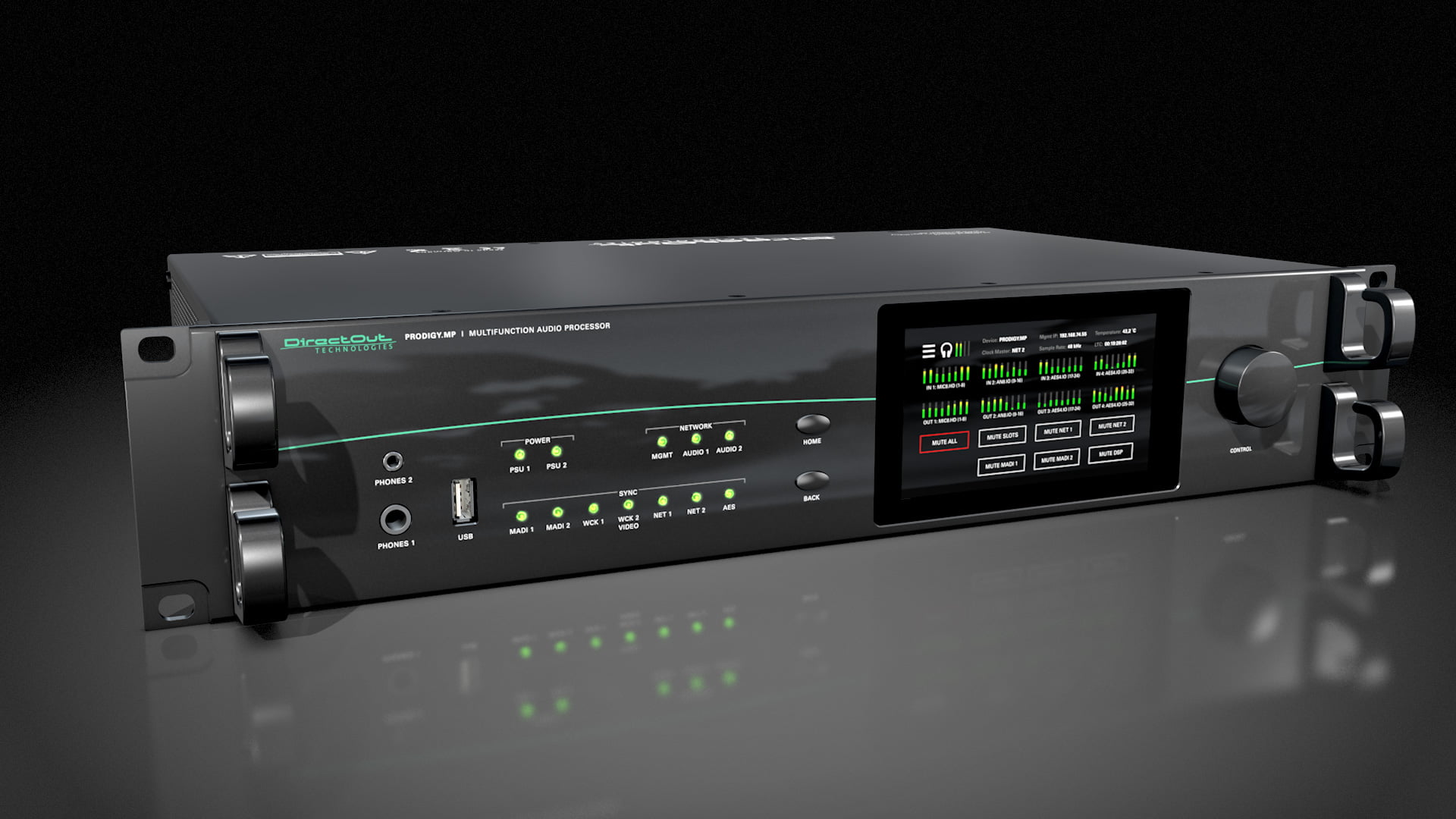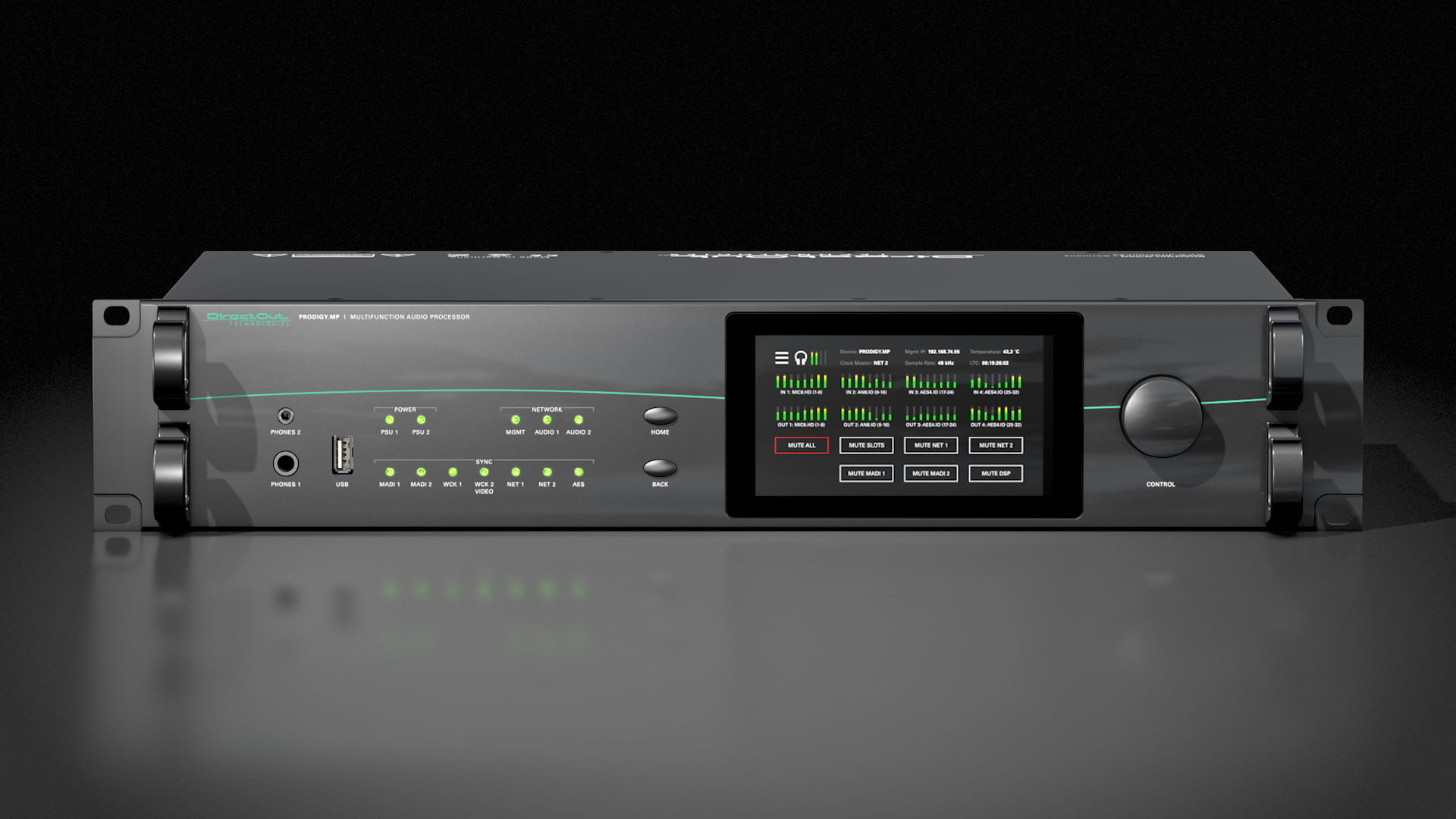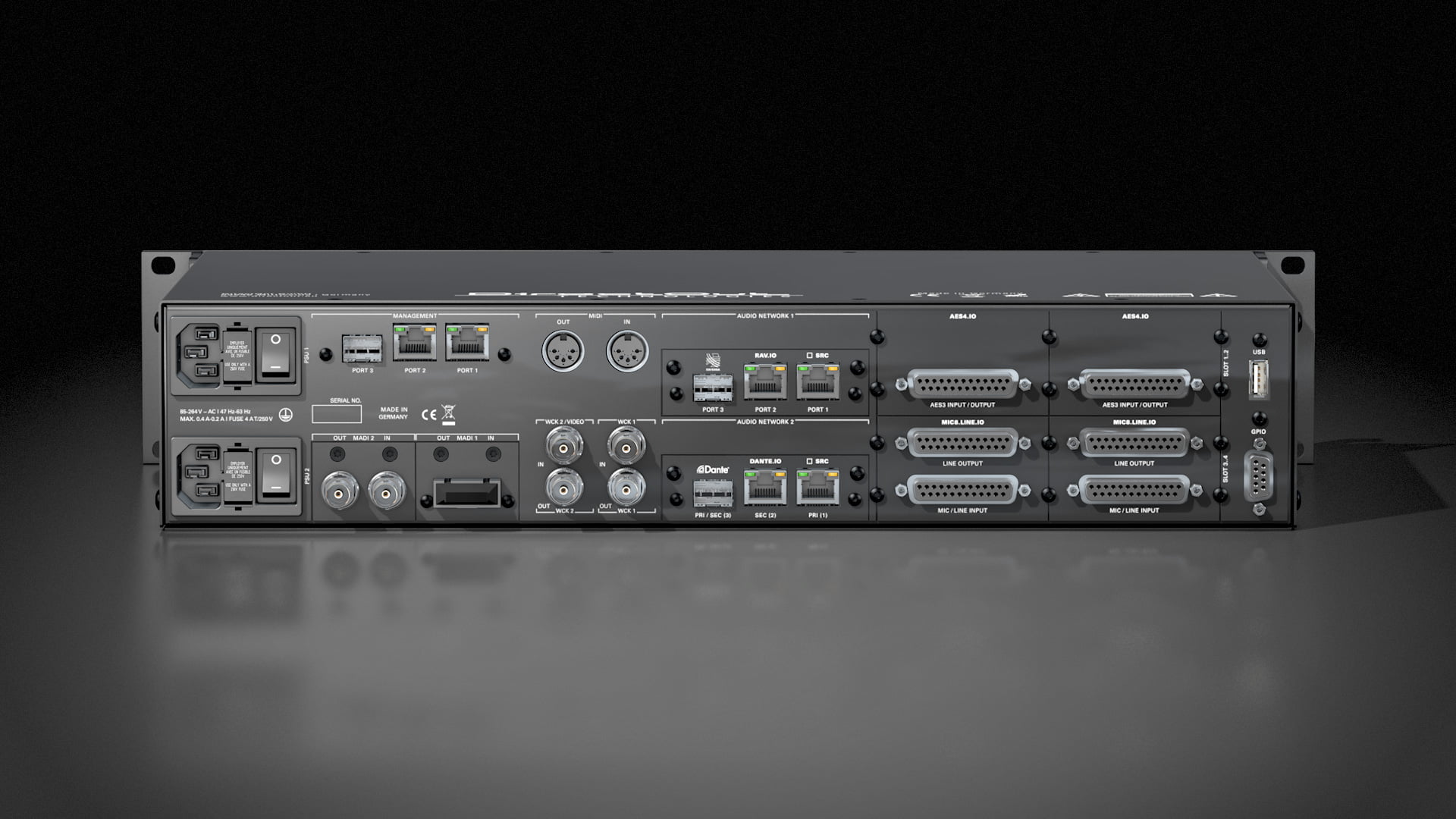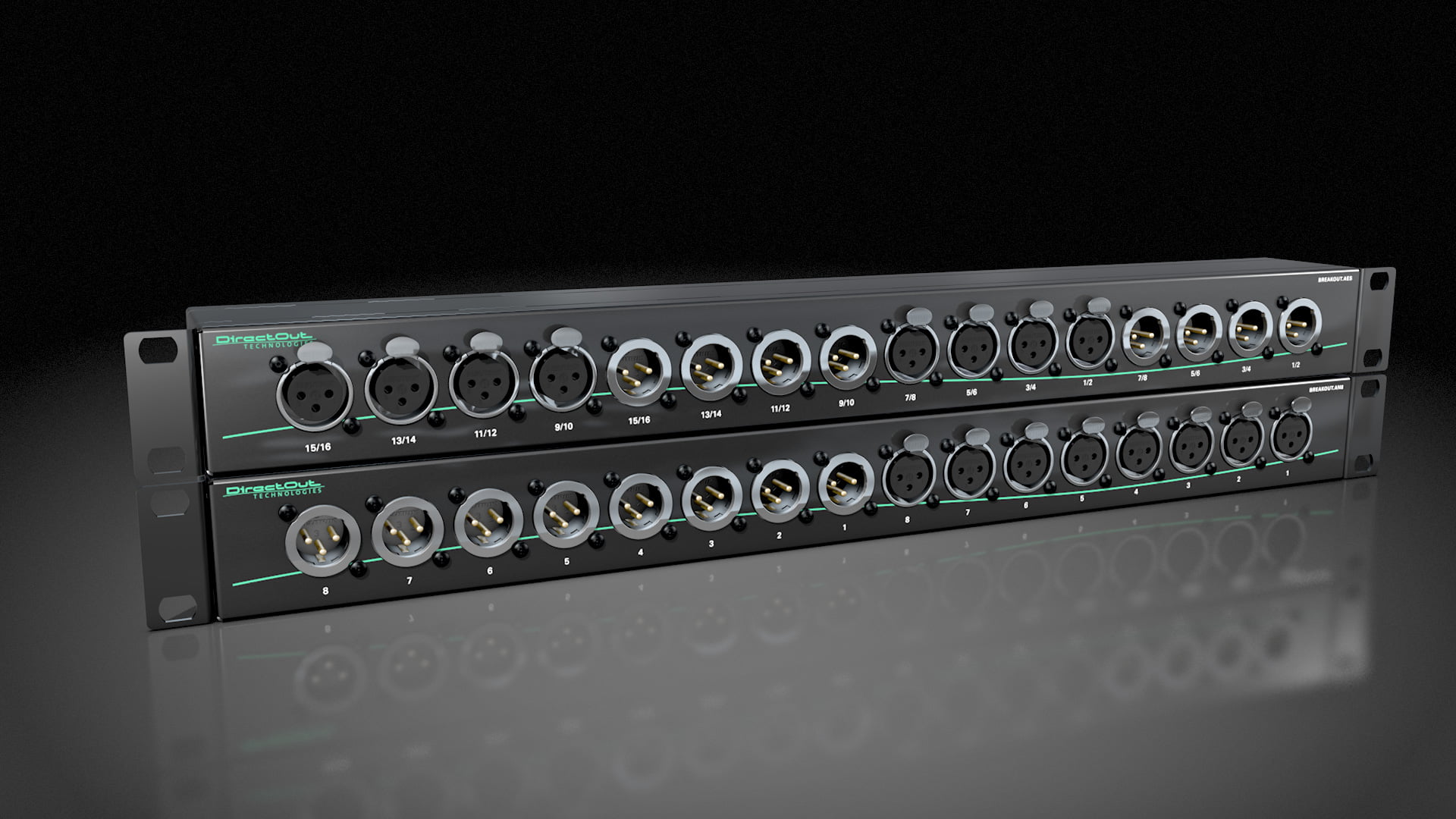Designed to address numerous applications in live sound, broadcast, installation and recording, PRODIGY.MP provides flexible I/O, dual network audio, DSP functions, sample rate conversion and powerful hard- and software. Fully modular, the hardware can be configured to specific requirements. A granular license model grants a customizable feature set, giving budget savings as well as the flexibility to address changes in the global media environment through future upgrades.
Modules - IO
PRODIGY.MP features two A slots, two B slots and four C slots:
- A slot - audio network, multi-port MADI or USB - up to 128 channels per module
- B slot - single-port MADI - 64 channels per module
- C slot - converter (mic/line, AD/DA) and AES3 - 8 channels per module
The channel capacity sums up to 416 inputs and 420 outputs which are managed with a channel-based routing matrix.
Multi Format
- RAVENNA / AES67
- Dante
- SoundGrid
- AVB / MILAN
- MADI single-port, multi-port
- Analog
- AES3
- USB
DSP, SRC & Sync management
FPGA-based and low-latency processing offers Matrix Mixers, Summing Busses and Flex-Channels with EQ (FIR & IIR filters), Dynamics, Delay and external plug-ins. Flex-channels can be configured as input/pre faders or output/post faders. Phase locked operation of all audio channels is ensured via Time-Adjust.
The internal DSP reference can be set to Word Clock or Video input, any network / digital input, or internally generated clock.
Sample Rate Converters on AES inputs and FastSRC™ on MADI I/Os and audio network I/Os are available allowing simultaneous Media-, Format- and Sample Rate Conversion and full routing at up to 192 kHz.
Networked Audio & Seamless Interoperability
PRODIGY.MP can simultaneously host up to two Network Audio Modules supporting different network formats and allowing seamless interoperability between them. The RAVENNA module complies with AES67, ST 2110-30 / -31, and supports all ST 2022-7 classes. As a successful participant of the JT-NM Tested program RAV.IO is listed in the JT-NM Tested Catalog as a module aligning with the SMPTE 2110 standards. With the Dante option, the hardware can be a front-end for audio consoles, or a standalone converter, DSP, SRC and routing system. Waves Audio’s SoundGrid offers extremely low latency audio transport and allows Waves servers to be connected for plug-in inserts. Virtual soundcards for macOS® and Windows® can directly interface with any DAW for multitrack recording and virtual sound-checking.
Control Is Key, Multiple Access Locally & Remotely
globcon remote control, a browser-based GUI, and a front panel touch display ensure ultimate usability.
globcon software offers full control of multiple pieces of equipment in Mac/PC/Linux-based systems and features a comprehensive snapshot management with selective recall scope-sets. It also supports trigger management which includes OSC and MIDI for control e.g. from a tablet device. The measurement software Smaart from Rational Acoustics can be accessed via API.
Automated surveillance and red-light control are possible through GPIOs. USB ports on the front and rear panels offer connection and control of legacy devices via globcon bridge.
PRODIGY Series - Video Tutorials
Safe Operation, Monitoring
Two headphone outputs provide local monitoring of any I/O. Two phase-redundant power supplies grant seamless operation of the device. An internal switch on the network module ensures redundancy for the network domain.
While the Dante module supports Dante redundancy, the RAVENNA module offers stream redundancy in accordance with ST 2022-7.
EARS™ (Enhanced Automatic Redundancy Switching) is available for several combinations of inputs. EARS™ is a system to prevent interruption of the output signal. It uses either the proven BLDS™ technology or pilot tone triggering. A logic monitors the condition of the trigger signal on the input. In case of a failure it switches automatically to the backup input.
The BLDS™ Generator can be patched as virtual source in the Matrix and provides monitoring of connections with automatic fail-over switching.
An internal LTC reader displays incoming linear timecode on the touchscreen or via the globcon control software where it can be used to trigger any action.





